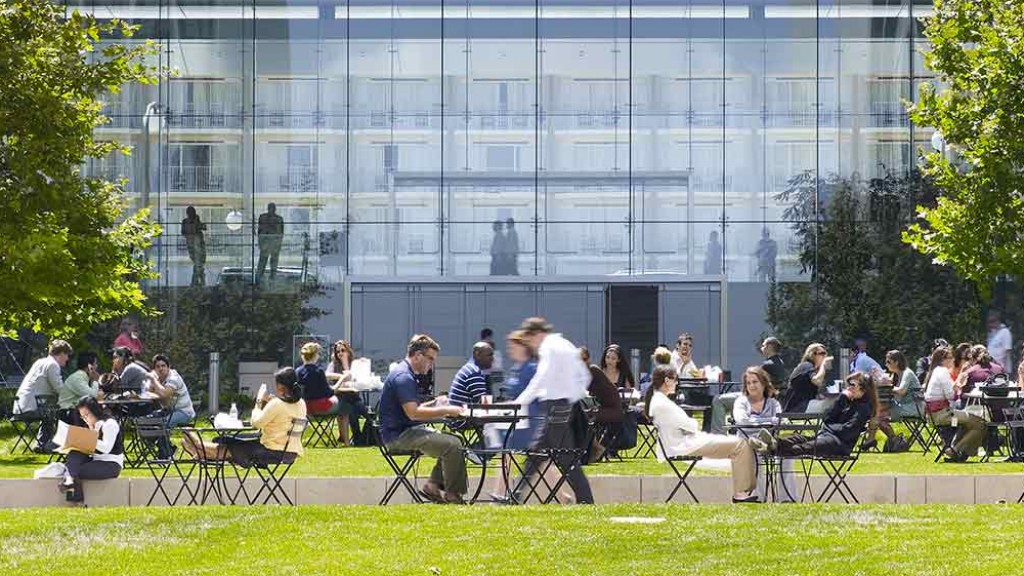What is the commercial value of open space?
Open Spaces
What We Did
We partnered with the Urban Land Institute (ULI) to conduct an online survey of 350 investors, developers, property advisors, and public sector workers in 33 European countries about the value of urban open spaces (public parks, squares, outdoor public venues, open waterfront, small landscaped areas between buildings, roof terraces). Our goal was to develop a better understanding of the commercial value of open space in Europe’s cities and to investigate potential opportunities to promote the development and benefits of open space.
The Context
As the world’s population continues its dramatic migration toward urban areas, it is imperative that we ask questions of how to best make our cities both livable and successful—socially, economically, and environmentally. The integration of open space—whether in the form of large parks or public plazas—has a long history of contributing to the character and livability of our cities, but the value can be hard to quantify. Population growth and urbanization continue to put pressure on cities to add density. If we are to preserve and continue to develop the spaces required to make our cities not only functional but humane, valuing urban open space is a necessary step to ensuring its place in the cities of tomorrow.
The Results
Our survey revealed an overall consensus about the value of open space for cities, businesses, and people, and the need for the public and private sectors to work together on open space–related issues. The survey reveals that the private sector is more than willing to invest in open spaces if the right vehicle for investment is made available, and the investment is managed properly. Of our respondents, 95% not only believed that good open space adds value to commercial property, but also were prepared to pay at least 3% more to be in close proximity to open space; 73% believed that open space could act as a crucial catalyst for economic development. This figure goes up to 79% among investors, 77% among public sector workers, and 87% among our property advisor audience (architects, engineers, property agents, and consultants).
When asked about how public spaces should be developed and managed, 84% of those surveyed believed that both the public and private sectors should be responsible for the development of open spaces. This percentage increases to 100% among developers, indicating a clear willingness of those in the private sector to partner in the development of open spaces. Furthermore, 69% of respondents believed open space should be maintained through a combination of efforts from both the public and private sectors; and 82% would be prepared to invest more in open spaces if there were a financial incentive.
What This Means
Open space has a clear value-add. The vast majority of respondents believed open space adds value to adjacent property and were willing to pay more for property in proximity to open space.
We need to explore new development models for open space. Respondents see open space as a catalyst for economic development, and overwhelmingly believed that the development and maintenance of these spaces should fall on both the public and private sectors.
The need for open space will continue to increase. Population growth and continued migration toward successful cities increase the pressure on existing open space. Without the creation of more open areas, London will have an open space deficit of 1,100 hectares by 2031, the equivalent of five Queen Elizabeth Olympic Parks.
Not just any space will do—quality is important. Our results indicate a strong correlation between the quality of an open space, its usage, and assessment of value. However, even in countries where usage is below average, an overwhelming majority believe in the value of open space, indicating an appetite for improvement.
What’s Next?
Our challenge moving forward is to continue the discussion and to investigate new methods through which to encourage the creation and maintenance of open space. Public sector investment is scarce, creating challenges in both the development of new spaces and even more crucially in the maintenance of existing ones. Innovative strategies that marry public and private interests—and investment—will be necessary to provide the required urban open spaces as our cities continue to grow.
Learn More
Team
Ian Mulcahey, Greg Clark (ULI), Alessandra Almeida Jones, Tim Pittman, Anna Robinson, Gareth Evans (Inside Cities), Sarah Nemecek (ULI), Alex Notey (ULI)
Year Completed
2011
Comments or ideas for further questions we should investigate?
